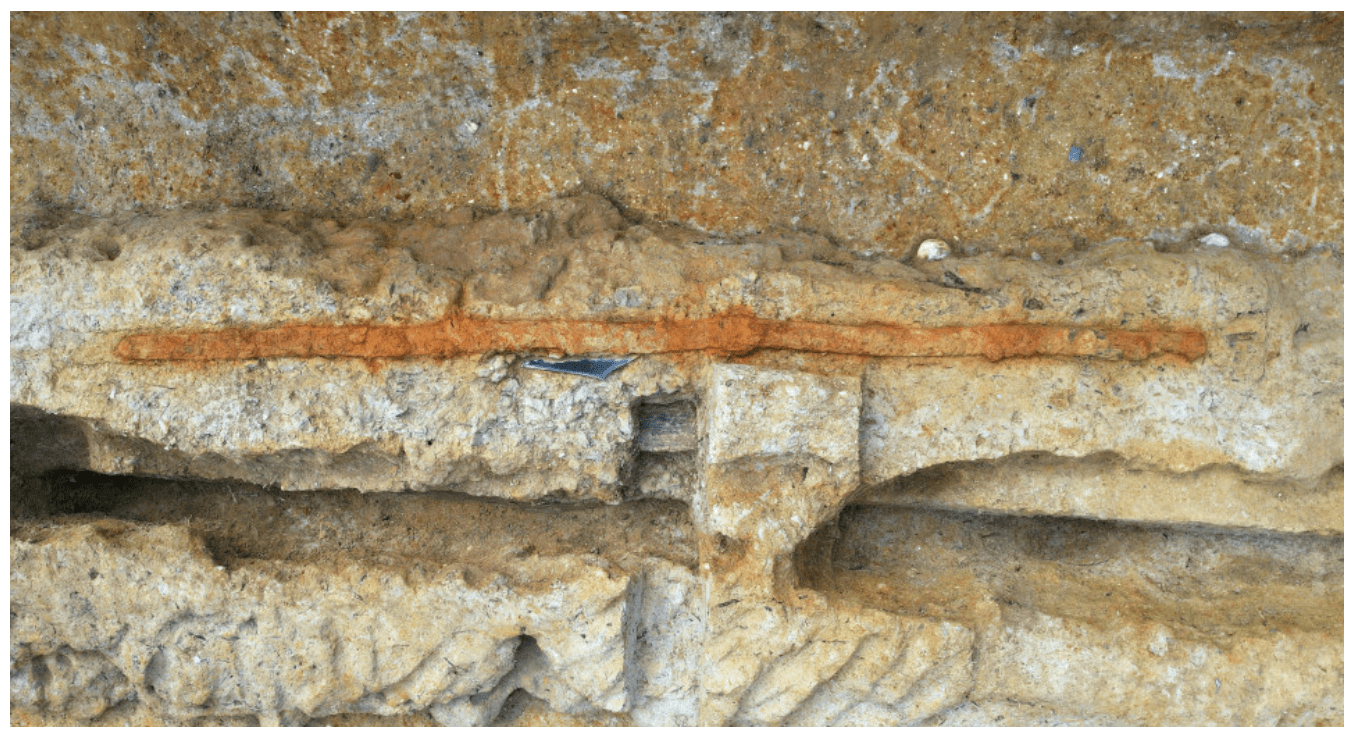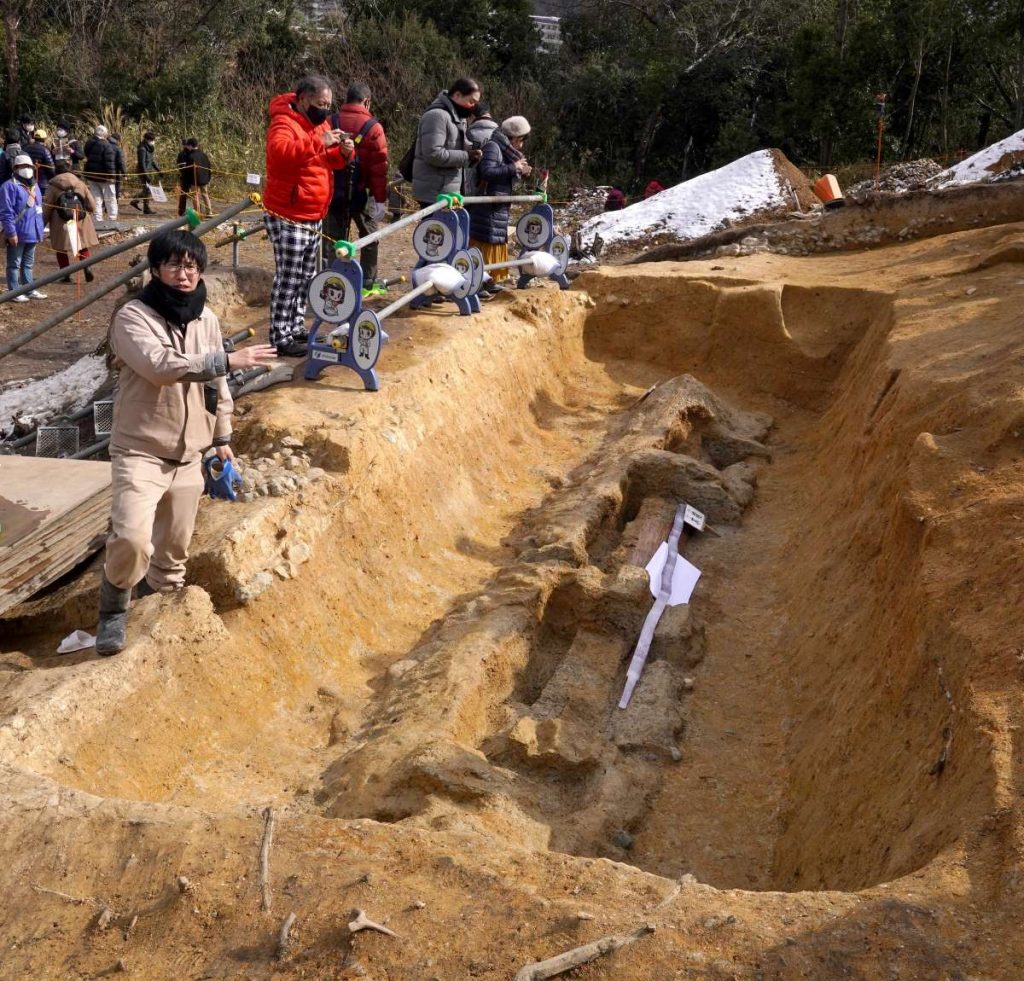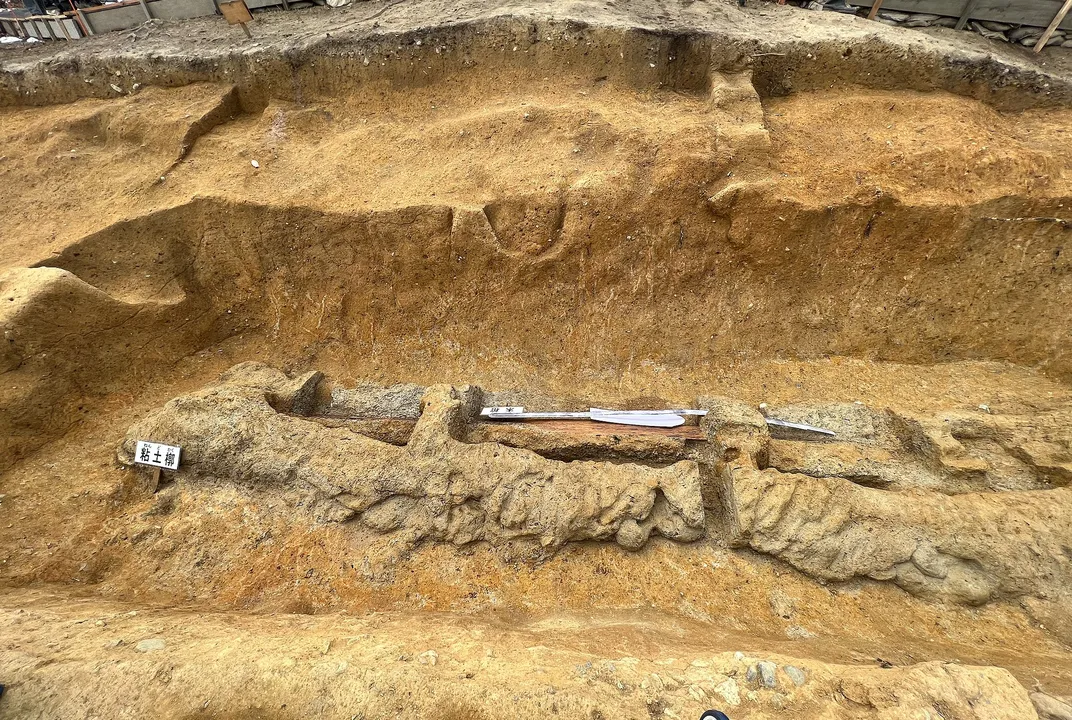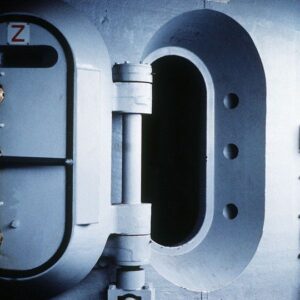Nara’s Ancient Sword: A 1,600-Year-Old Protector Against Evil Spirits

In a remarkable discovery that has captured the attention of archaeologists and historians alike, a 7.5-foot-long iron sword was unearthed from a 1,600-year-old burial mound in Nara, Japan. This oversized weapon, too large to be used in combat, is believed to have served a ceremonial purpose, perhaps intended to protect the deceased from malevolent forces in the afterlife. Alongside the sword, a bronze mirror shaped like a shield was also found, adding to the significance of this ancient tomb.
A Monumental Discovery in Nara

During an excavation of the Tomio Maruyama burial mound near Nara, Japan, archaeologist Riku Murase of the Nara City Archaeological Research Center made a startling discovery. Unearthed within the tomb was an iron sword measuring a staggering 7.5 feet (2.3 meters) in length. The sheer size of the sword left Murase in disbelief. “I was surprised,” he remarked. “It was so long that I doubted it was true.”
The sword, found in late November, is part of a larger context that includes the Tomio Maruyama kofun, a burial mound dating back to the fourth century A.D. While similar dakō swords have been discovered in other ancient Japanese tombs, none have matched the extraordinary size of this particular find. According to Murase, “It is twice as big as any other sword found so far in Japan.”
The Significance of the Tomio Maruyama Kofun

The Nara region is renowned for its numerous burial mounds, known as “kofun,” which were constructed during the Kofun period between A.D. 300 and 710. These mounds, of which there may be as many as 160,000 across Japan, vary in size but often serve as commemorative monuments for individuals of high status. The Tomio Maruyama kofun, where the oversized sword was found, is one of the largest in Japan, with a diameter exceeding 350 feet (100 meters) and a height of up to 32 feet (10 meters).
Although the mound may have been intended to honor someone connected to the imperial Yamato family, no human remains have been discovered. Instead, the excavation revealed a large coffin, along with various artifacts from the Kofun period, including iron farming tools, copper containers, and eating utensils.
Masterpieces of Kofun Metalwork

In addition to the sword, the latest excavation at the Tomio Maruyama kofun yielded a large bronze mirror, shaped like a shield. This artifact, measuring about 2 feet (60 centimeters) in length and 1 foot (30 centimeters) in width, is also thought to have been placed in the tomb to protect the deceased from evil spirits. Kosaku Okabayashi, deputy director for Nara Prefecture’s Archaeological Institute of Kashihara, commented on the significance of these finds, stating that they showcase the advanced metalworking skills of the Kofun period. “They are masterpieces in metalwork from that period,” he said.
The Ceremonial Role of Dakō Swords

Stefan Maeder, an expert in Japanese swords and ancient sword-making, noted that the undulating or wavy dakō swords, like the one found in Nara, were likely ceremonial in nature. “I would not say they are common,” Maeder explained. “They are prestigious objects of high society.” He also highlighted a tradition in Japan of offering oversized swords to deities or powerful spirits, a practice that persisted in later centuries and is still evident in Shinto shrines and Buddhist temples today.
The distinctive wavy design of dakō swords may symbolize a dragon or a snake, imbuing the sword with a perceived magical power, even if it did not enhance its functionality as a weapon. Maeder also suggested that these swords might have represented a spiritual connection between Japan and the heavens, a notion sometimes reflected in tomb artwork and on the swords themselves through the depiction of constellations like the Big Dipper (Ursa Major).
Conclusion
The discovery of the 7.5-foot-long sword in Nara’s Tomio Maruyama burial mound offers a fascinating glimpse into Japan’s ancient past. This oversized weapon, likely used for ceremonial purposes, underscores the rich cultural and spiritual heritage of the Kofun period. Alongside the bronze mirror, the sword serves as a testament to the advanced craftsmanship and deep spiritual beliefs of a society that sought to protect its dead from evil forces, even in the afterlife.
Video
News
The Hanging Temple: China’s 1,500-Year-Old Cliffside Marvel of Faith and Engineering
The Hanging Temple: China’s 1,500-Year-Old Cliffside Marvel of Faith and Engineering Perched precariously on the cliffs of Mount Heng in Shanxi Province, China, the Hanging Temple, also known as Xuankong Temple, Hengshan Hanging Temple, or Hanging Monastery, is an architectural…
The Willendorf Venus: A 30,000-Year-Old Masterpiece Reveals Astonishing Secrets
The Willendorf Venus: A 30,000-Year-Old Masterpiece Reveals Astonishing Secrets The “Willendorf Venus” stands as one of the most revered archaeological treasures from the Upper Paleolithic era. Discovered in 1908 by scientist Johann Veran near Willendorf, Austria, this small yet profound…
Unveiling the Maya: Hallucinogens and Rituals Beneath the Yucatán Ball Courts
Unveiling the Maya: Hallucinogens and Rituals Beneath the Yucatán Ball Courts New archaeological research has uncovered intriguing insights into the ritual practices of the ancient Maya civilization. The focus of this study is a ceremonial offering found beneath the sediment…
Uncovering the Oldest Agricultural Machine: The Threshing Sledge’s Neolithic Origins
Uncovering the Oldest Agricultural Machine: The Threshing Sledge’s Neolithic Origins The history of agricultural innovation is a fascinating journey that spans thousands of years, and one of the earliest known agricultural machines is the threshing sledge. Recently, a groundbreaking study…
The Inflatable Plane, Dropped Behind the Lines for Downed Pilots
Experimental The Inflatable Plane, Dropped Behind the Lines for Downed Pilots The Inflatoplane from Goodyear was an unconventional aircraft developed by the Goodyear Aircraft Company, a branch of the renowned Goodyear Tire and Rubber Company, also famed for the Goodyear…
USS New Jersey – Black Dragon
Battleships, Latest USS New Jersey – Black Dragon The USS New Jersey (BB-62) is an Iowa-class battleship that has seen combat in World War II, the Korean War, the Vietnam War, and the Lebanese Civil War, making her one of the…
End of content
No more pages to load











